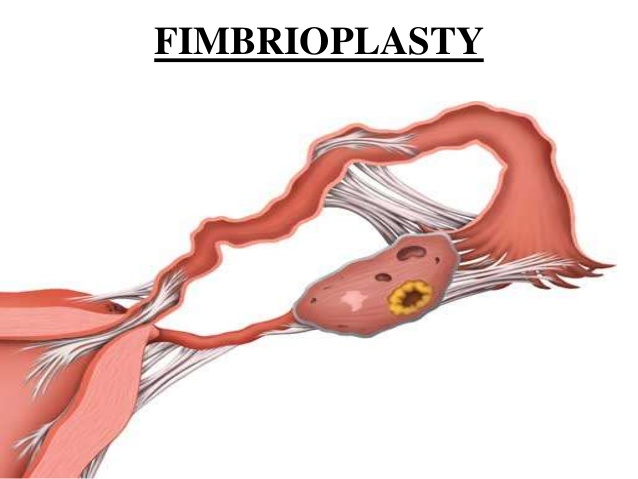Fimbrioplasty
Infertility is a condition that many women of reproductive age suffer. While there are several reasons why a couple may struggle to conceive, problems with the female reproductive system may be one of them. Pregnancy becomes far more difficult –– if not impossible –– when a woman’s fallopian tubes are impaired in any aspect. A fimbrioplasty is a procedure that restores the integrity of the fallopian tubes, allowing infertile women to become pregnant. If you have a blockage in the section of your fallopian tube closest to the ovary, your doctor may recommend a fimbrioplasty operation. This treatment unlocks the obstructed tube and preserves tissue known as fimbriae, allowing your eggs to pass through.

Fallopian Tube Damage Signs and Symptoms
If you’ve been trying to conceive for a year and haven’t been successful, you may have a partial or complete fallopian tube blockage. Generally blockage of fallopian tubes will not cause any symptoms. You may rarely experience.
Back pain
Heavy menstrual periods or spotting between menstrual intervals
Painful urination
Painful bowel movements
Severe abdominal pain
Fatigue
Women may suffer discomfort in the belly or abdomen as a result of damage to their fallopian tubes in some cases. These aches and pains usually correlate with their menstrual cycles.
Right candidate for fimbrioplasty procedure
A variety of circumstances might contribute to infertility. Though tubal problems are rather prevalent, other ovaries-related concerns are also conceivable. Damage to the fallopian tubes is connected with certain diseases and infections. If you’ve had any of the following problems in the past, you could be an ideal candidate for fimbrioplasty:
Any past abdominal surgery.
Inflammation of the cervix.
Endometriosis.
Several Sexually transmitted diseases.
Ectopic pregnancy in the past.
How Does a Fimbrioplasty Procedure Work?
The fallopian tubes are important in the process of fertilisation. Fertilization takes place within the fallopian tubes. They also serve as a link between the ovaries and the uterus. There is, however, no direct link between the ovaries and the fallopian tubes. Each fallopian tube, on the other hand, bears a set of fimbriae, which are little finger-like projections that work to grab and guide released eggs.
The fimbriae are tiny projections at the ends of the fallopian tubes that function like fingers to pick up the egg once the ovary releases it. Fimbrioplasty is typically performed as part of a salpingostomy, but in addition to eliminating the blockage in your tube, your doctor will rebuild the fimbriae.
When the fimbriae become damaged, scarred, or obstructed, the chances of conception decrease dramatically. As a result, surgeons can perform a fimbrioplasty to repair these problems. This microsurgery entails eliminating scar tissue, removing obstructions, and repairing the fimbriae.
Recovery time after fimbrioplasty
Fimbrioplasty is a type of tuboplasty that is performed as an outpatient procedure. Many patients will be able to return home within a few days of their operation. In general, the recovery time is about 1-2 weeks; however, some women may need to wait several weeks before engaging in regular physical activity.
